Village treasures: Ancient viaduct and spectacular church near Ternopil worth visiting
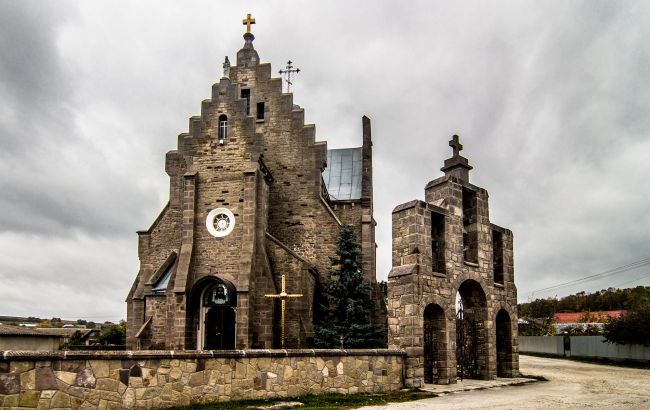 Why you should visit the historic village of Butsniv and what to see there (photo: Wikipedia)
Why you should visit the historic village of Butsniv and what to see there (photo: Wikipedia)
In the Ternopil region, the village of Butsniv has preserved unique landmarks worth seeing at least once in a lifetime. These include a church designed by the renowned Lviv architect Julian Zachariewicz and an old arched railway bridge that still impresses with its scale. Here's what you need to know about Butsniv and why it's a must-visit.
History of Butsniv
Butsniv is a small yet remarkably picturesque village where architecture, history, and nature blend into a harmonious landscape. Its views and historic architecture leave a lasting impression on every visitor.
The town received Magdeburg rights in 1469, and the first official mention of it appears in documents from 1564. Archaeological research has revealed relics of Old Rus culture near the village.
The first recorded mention of the settlement dates back to 1464, noting that Jan Rey of Shumsk leased his village and a smaller settlement, Lower Buchniovka, to Mateusz Lubicz for 40 Polish marks.
Some time later, King Casimir IV granted part of Butsniv to Matsey of Starolomzha, the Galician land clerk and simultaneously the provost of Bibrka. Ownership later passed to royal governor Janusz of Robczyce, followed by Henryk Miszowski.
In 1520, with the king's permission, brothers Jan and Viktor Seninski acquired Butsniv. They built a stone castle there and sold their property to Maciej Włodek twenty years later.
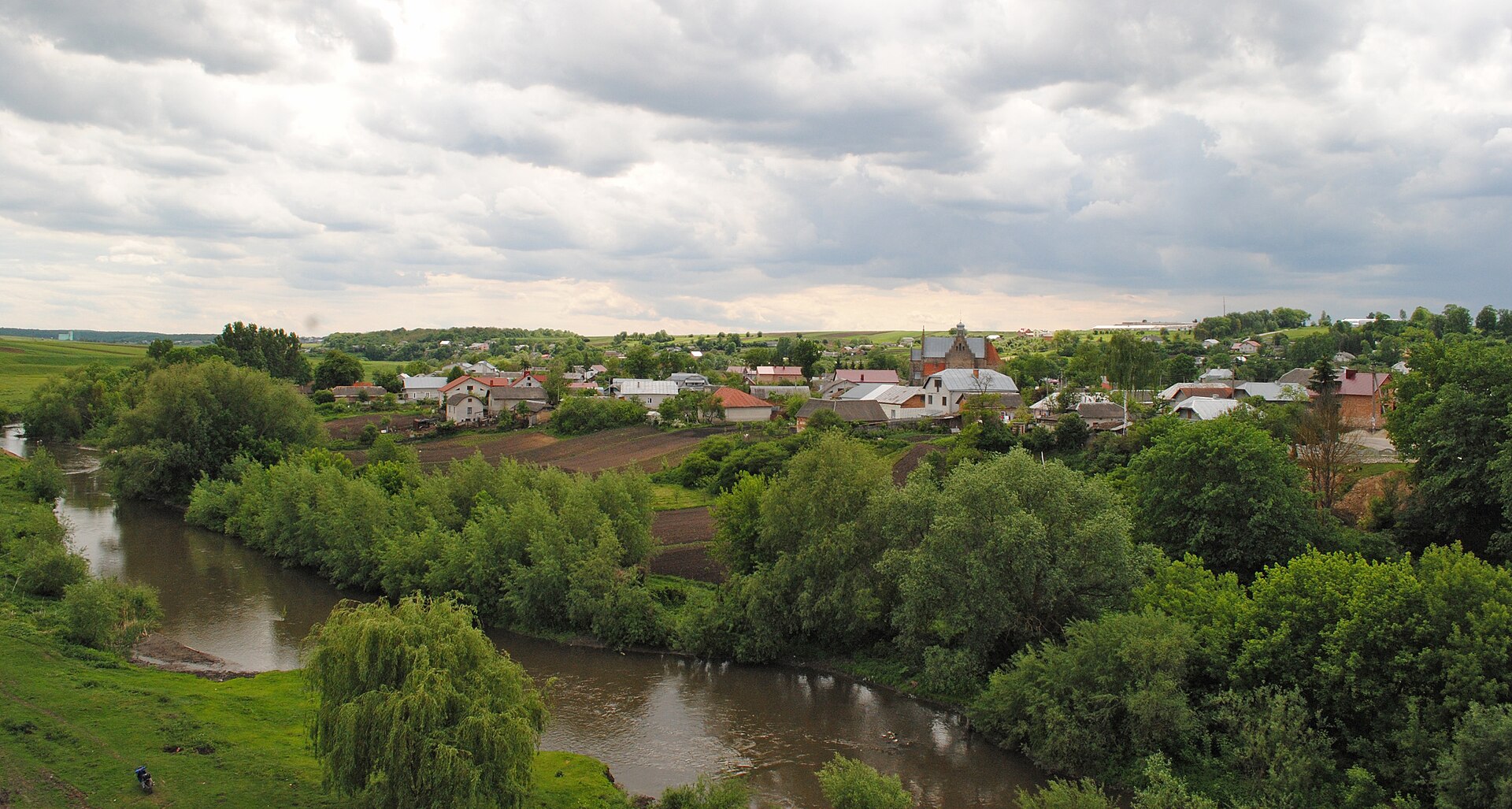 The village of Butsniv. View from the historic viaduct (photo: Wikipedia)
The village of Butsniv. View from the historic viaduct (photo: Wikipedia)
In 1620, the town was destroyed by the Tatars. During the Ukrainian National Liberation Revolution of 1648-1676, the castle and 96 houses were ruined.
Over time, the village belonged to the Potocki, Rudziński, Krasiński, Bielski, and, from 1840, the Serwatowski families. The last owners, descendants of the Serwatowskis, were arrested by the NKVD in April 1940 and exiled to special settlements in Kazakhstan. Some villagers were tortured or went missing during the German-Soviet war, and some joined the ranks of the OUN and UPA. Today, the village has a population of around 1,200 people.
Architectural heritage of Julian Zachariewicz
In the center of Butsniv stands the Church of St. Michael the Archangel, built at the end of the 19th century. The design belongs to Julian Zachariewicz, one of the most famous architects of Galicia, who also designed the main building of Lviv University, the George Hotel, and several churches.
The first church was built between 1890 and 1891. During World War I, it was partially destroyed and restored in 1922-1923.
The church exhibits Neo-Romanesque features: restrained forms, stone walls, elongated windows, and a neat tower. Inside, old murals and fragments of an iconostasis made by local craftsmen have been preserved.
In the 1990s, the church was converted into the Church of Saints Peter and Paul, belonging to the Kyiv Patriarchate of the Orthodox Church of Ukraine.
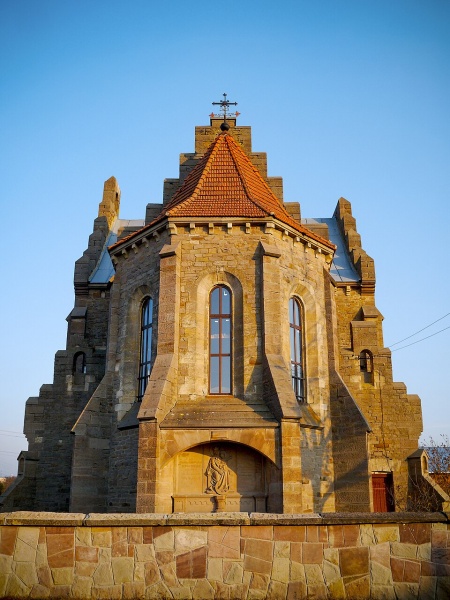
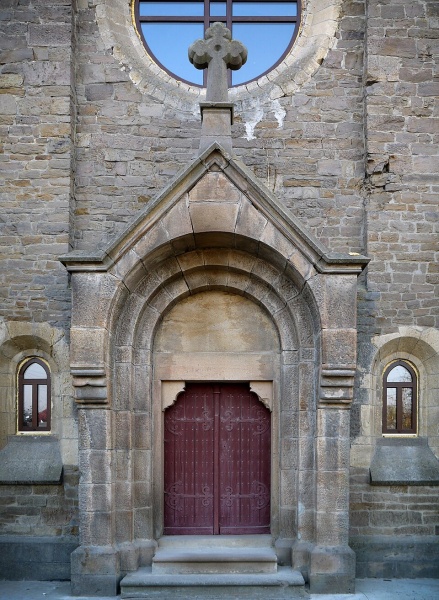
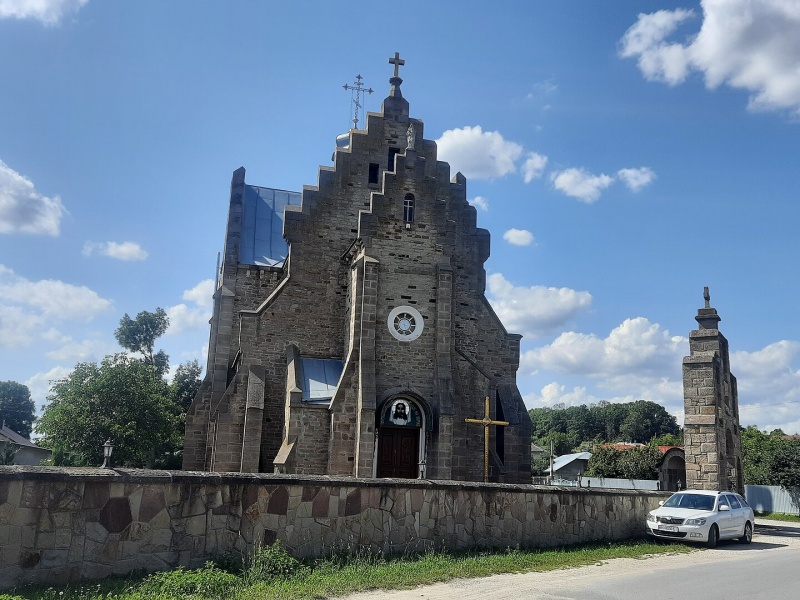
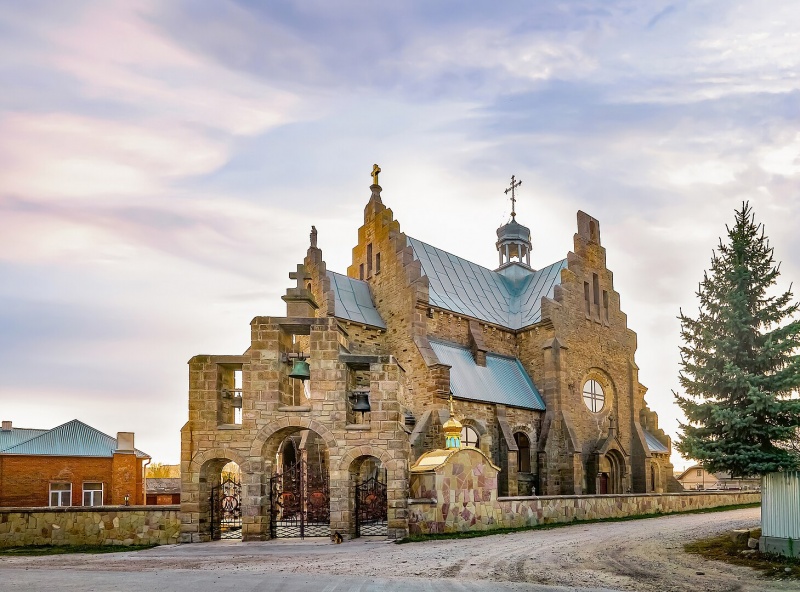
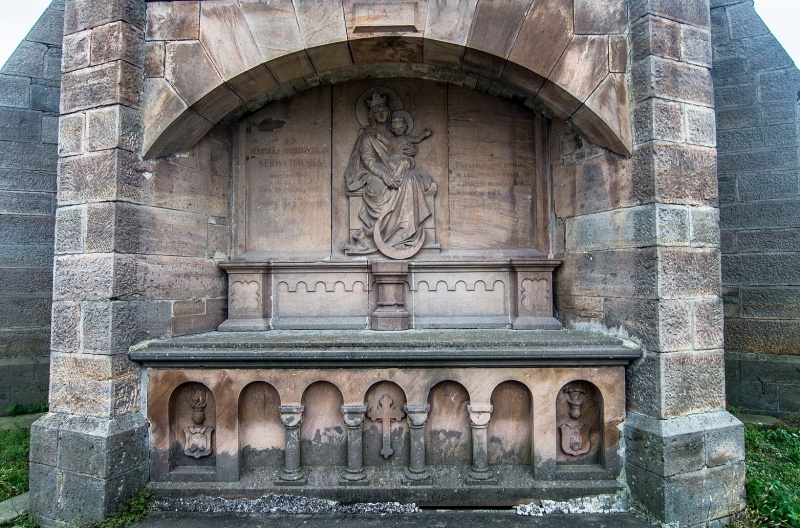
Historic church in Butsniv (photo: Wikipedia)
Other attractions in Butsniv
The village also has a Chapel of the Virgin Mary, which contains four statues, two of which were installed over a hundred years ago, in 1900 and 1906.
The Church of the Immaculate Conception of the Blessed Virgin Mary, built in 1744, is listed in the register of monuments as the Church of Saints Peter and Paul. An old church bell tower stands on the grounds there.
A memorial cross honoring the abolition of serfdom, erected in 1848, stands next to the church.
A monument commemorates local soldiers who died during World War II. It was created by Volodymyr Melnyk and installed in 1985.
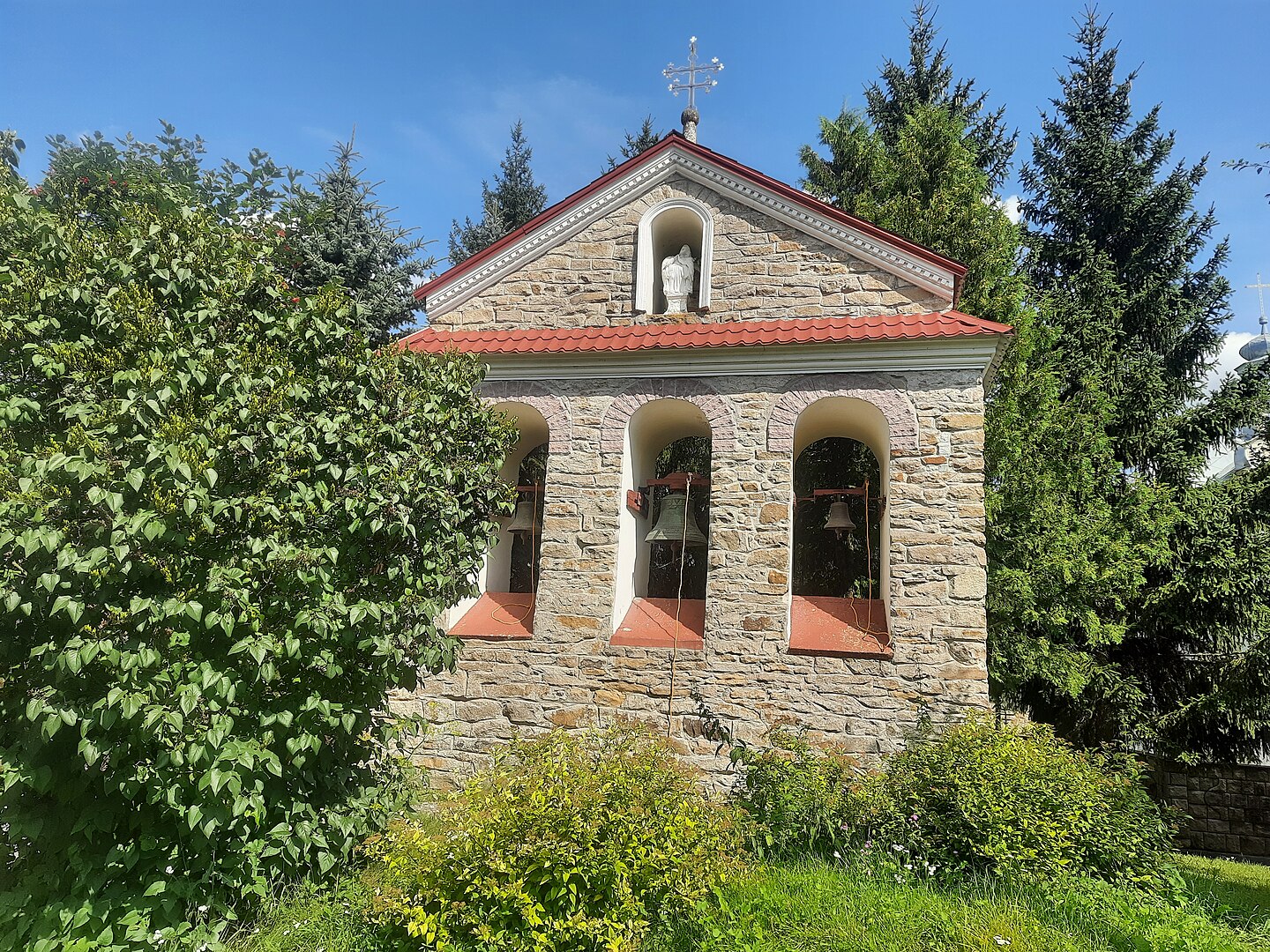 Historic bell tower in Butsniv (photo: Wikipedia)
Historic bell tower in Butsniv (photo: Wikipedia)
Historic railway bridge (viaduct)
Next to the church rises one of the region's most impressive engineering structures: an arched railway bridge over the Seret River. It was built back in 1897, when the strategic Lviv–Chernivtsi railway line was being constructed through the area.
The bridge impresses with the elegance of its stone arches and the strength of its construction, which has withstood more than a century of use. It is still in operation today, a rare case for a bridge of this age.
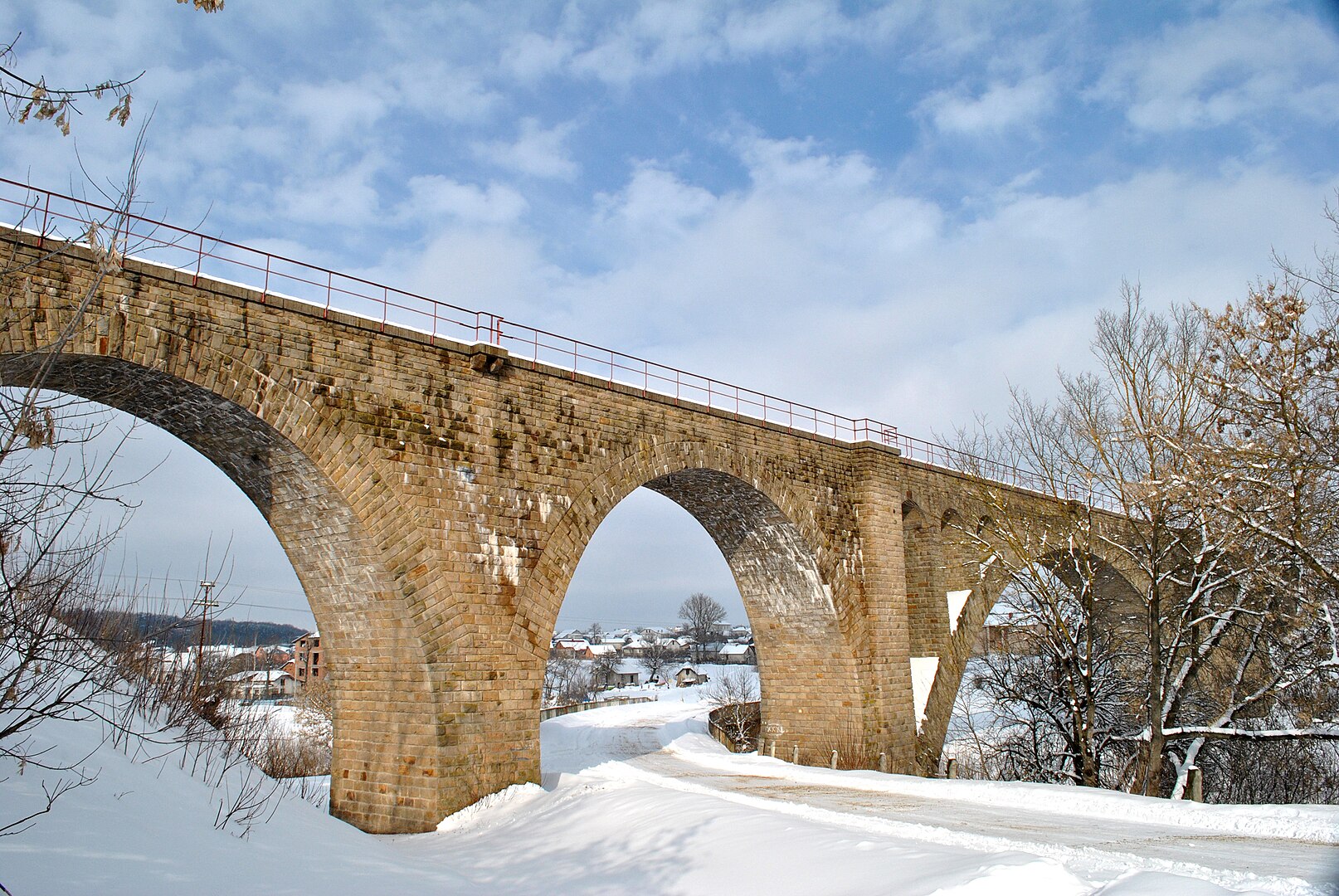 Centennial viaduct (railway bridge) in Butsniv (photo: Wikipedia)
Centennial viaduct (railway bridge) in Butsniv (photo: Wikipedia)
Butsniv: Harmony of nature and history
The village stretches across hills and forests, just a few kilometers from Ternopil. From here, visitors can enjoy picturesque views of the Seret valley, with the historic bridge adding special charm.
Tourists recommend visiting in spring or autumn, when nature creates a living backdrop around the church and bridge.
Earlier, we wrote about the palace in the Lviv region, which is considered cursed and reportedly haunted.
Sources: Lviv Architectural Heritage Archive, Lviv Polytechnic, State Register of Immovable Monuments of Ukraine, Ternopil Regional Tourist Guide, Local History Essays on Butsniv.

